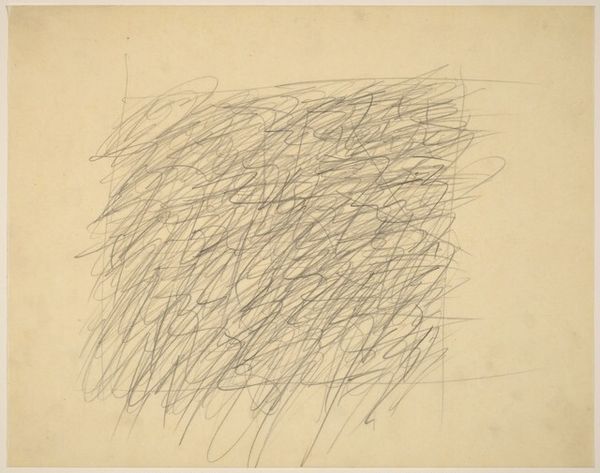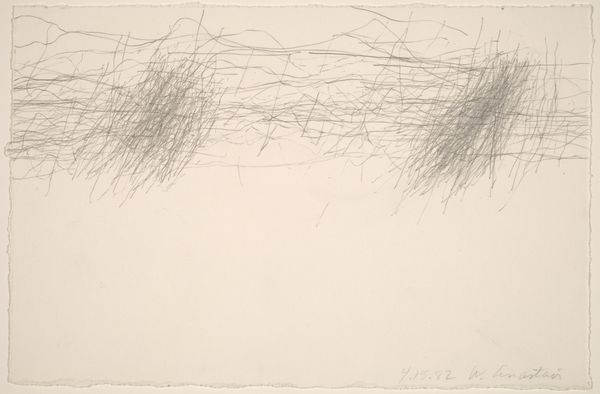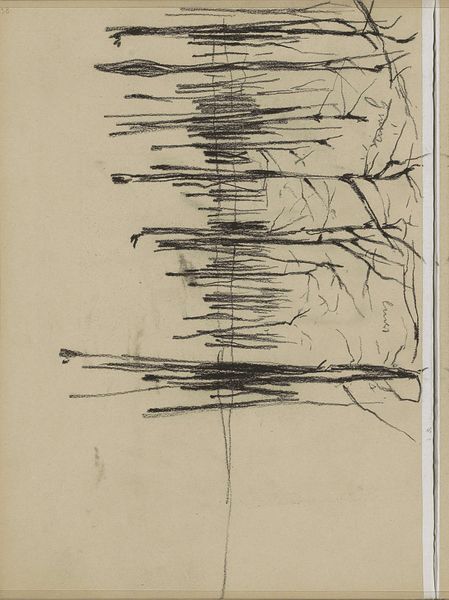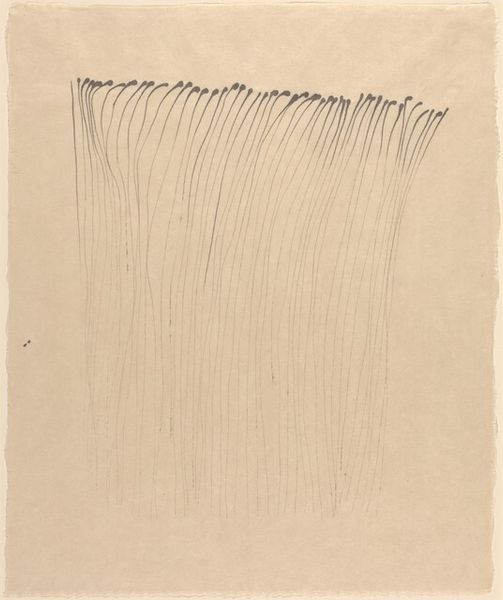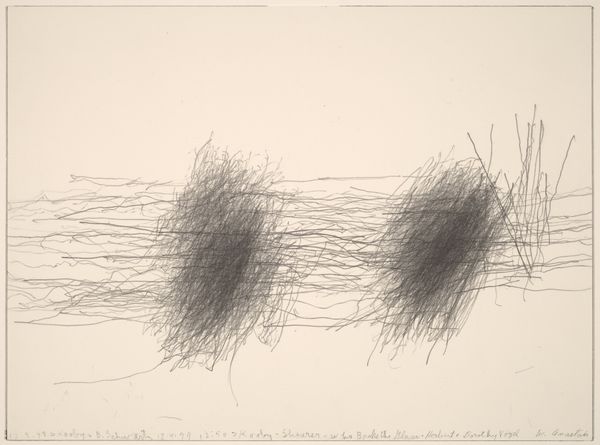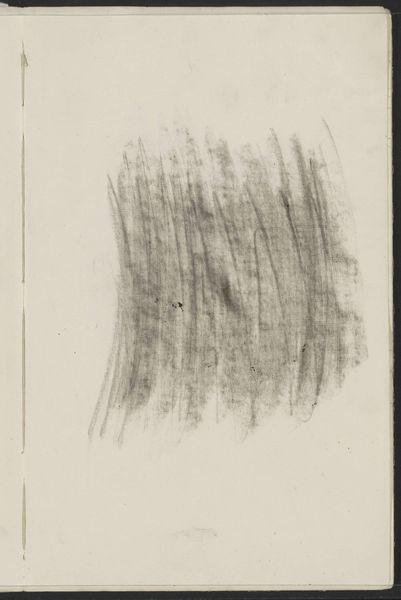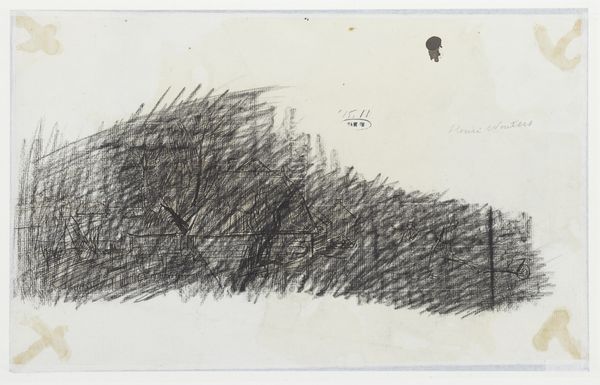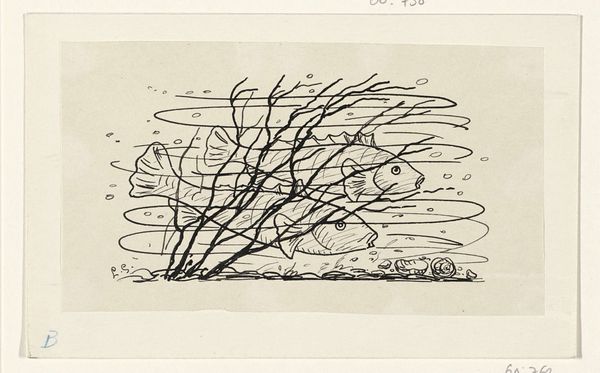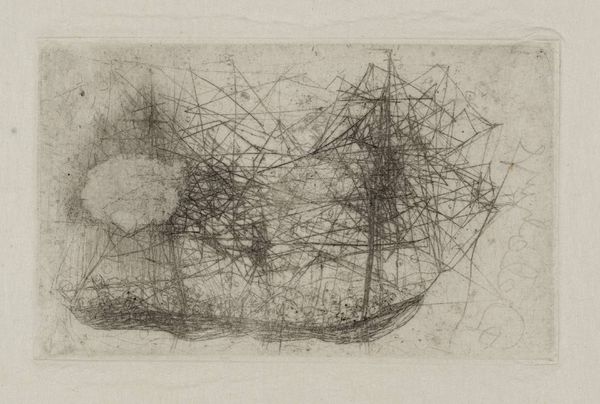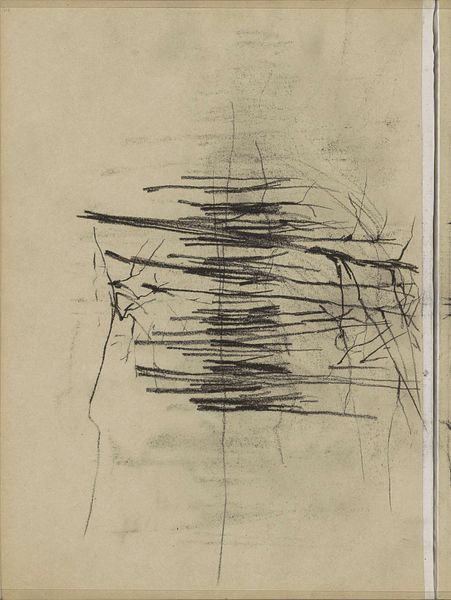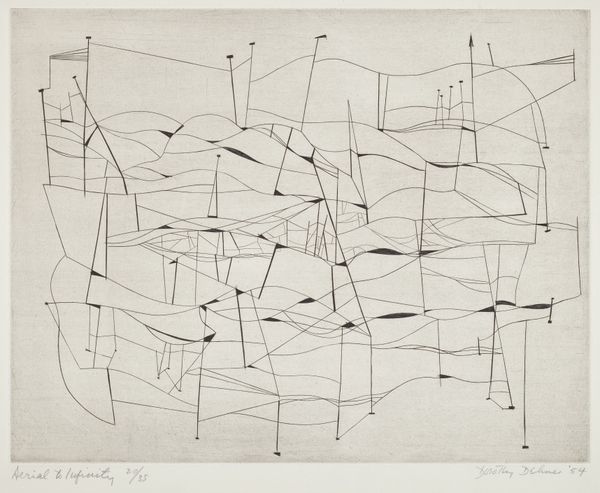
Dimensions: sheet: 38.1 x 53.3 cm (15 x 21 in.) overall: 24.8 x 33 cm (9 3/4 x 13 in.)
Copyright: National Gallery of Art: CC0 1.0
Editor: This is "Stalks," an etching made by Arnulf Rainer in 1971. There's something kind of unsettling about it, this dense mass of lines and dripping points, like something caught in a web. What do you see in this piece? Curator: The visual language here, particularly the chaotic layering of lines and the stark black ink against the bare paper, really resonates with the artistic and political climate of the late 20th century. Post-war art was grappling with trauma and uncertainty, and abstraction became a way to express the unspeakable. The title "Stalks" is interesting. What do you think of when you hear that word, in relation to these marks? Editor: Well, it makes me think of maybe the leftovers of a field after harvest, all dried up and spiky. Or, thinking about "stalking" like following or harassing...but I'm not sure. Curator: Exactly! Rainer was working within a context where artists were questioning traditional modes of representation and embracing process-based art. The drips and frenetic marks become a record of the artist's physical engagement with the plate, an almost violent application of ink. Does that intensity make you consider other work in the field of abstraction at that time? Editor: I see what you mean! Now that I'm thinking of the word itself, maybe these are the remains or residue from that past expression. And how does it feel like a commentary on what art "should" be? Curator: Precisely! The artist challenges conventional beauty standards. Rainer provokes a dialogue on what constitutes art, pushing boundaries. It is so linked to the rise of conceptual art, the dematerialization of the art object, that these indexical traces –the 'stalks'–are all that is left. It is also intensely human in the gestural energy! Editor: Wow, I'm seeing the piece in a whole new light now. The aggressive, chaotic nature, the implied violence—it all speaks to the anxieties of the time. Thanks so much for helping me unpack this. Curator: Absolutely! And I'm excited you picked up on that anxiety, seeing that historical connection—I love how art can bridge these conversations across generations.
Comments
No comments
Be the first to comment and join the conversation on the ultimate creative platform.
